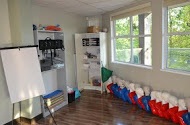
At Seattle CPR, we will train you to become a qualified CPR rescuer versed in giving compressions, ventilation, and defibrillaton. Our courses are affordable and varied, with basic and advanced classes offered all through the week. Because of the increasing number of students applying to our courses each year, some of our classes are even offered during the evenings and weekends. Depending on what program you enroll in, you will receive certification for it. If you have decided to train with us, visit our website at Seattle CPR and fill out the application form to start your enrollment! The form is available 24/7 so you may sign up for training when you are able to.
Hypertension and cardiac arrest
Hypertension is probably the factor that increases the odds of a heart attack happening. While coronary artery disease is responsible for blocking the blood vessels that lead to and from the heart, a sudden increase in blood pressure can cause the damaged vessel to rupture, causing both a hemorrhage and a heart attack. Most heart attacks happen during intense physical activity, particularly activities that increase a person’s blood pressure. For others, even simple exertion of effort over a short period of time can cause a heart attack.
But how does a person know he or she is hypertensive? If you regularly have your blood pressure taken, you know that it has two values: systolic and diastolic blood pressure. These values are written in fraction form (e.g. 110/70 mmHg). The value on top is systolic BP while the one on the bottom represents diastolic BP. Systolic blood pressure represents the amount of pressure that the heart needs to overcome to send blood to the next chamber and through the aorta and the body. Diastolic blood pressure represents the minimal amount of pressure exerted by the vessels and the heart during filling time.
- Hypertension is a blood pressure value of 140/90 and higher. Either systolic or diastolic values can be increased for a person to be a diagnosed hypertensive (e.g. 140/70, 100/95).
- Normal blood pressure has to have a value lower than 120/80. Both values have to be normal for a person to say he or she isn’t pre-hypertensive or hypertensive.
- Pre-hypertension is characterized by blood pressure values of 120-139/80-89.
When the heart cannot deal with extremely high blood pressure, it can stop beating and go into arrest.
CPR rescue in Seattle
When the heart stops beating, chest compressions have to be performed within the first ten minutes. After ten minutes, the brain starts to experience severe oxygen deprivation which can lead to irreversible tissue death. Chest compressions are done with two hands in adults, with a rate of 100/minute. The suggested compression: ventilation ratio is 30:2. For children, the rate and ratio is the same, but is done with either two fingers (for infants) or one hand (for toddlers and younger children). Adult compression depth should be at least 2 inches while pediatric compression depth is between 1.5 inches and 2 inches.
